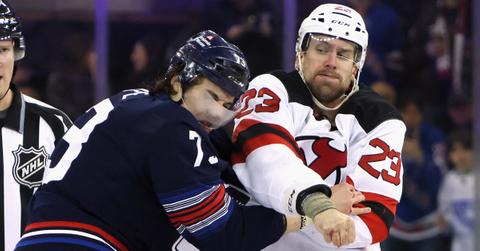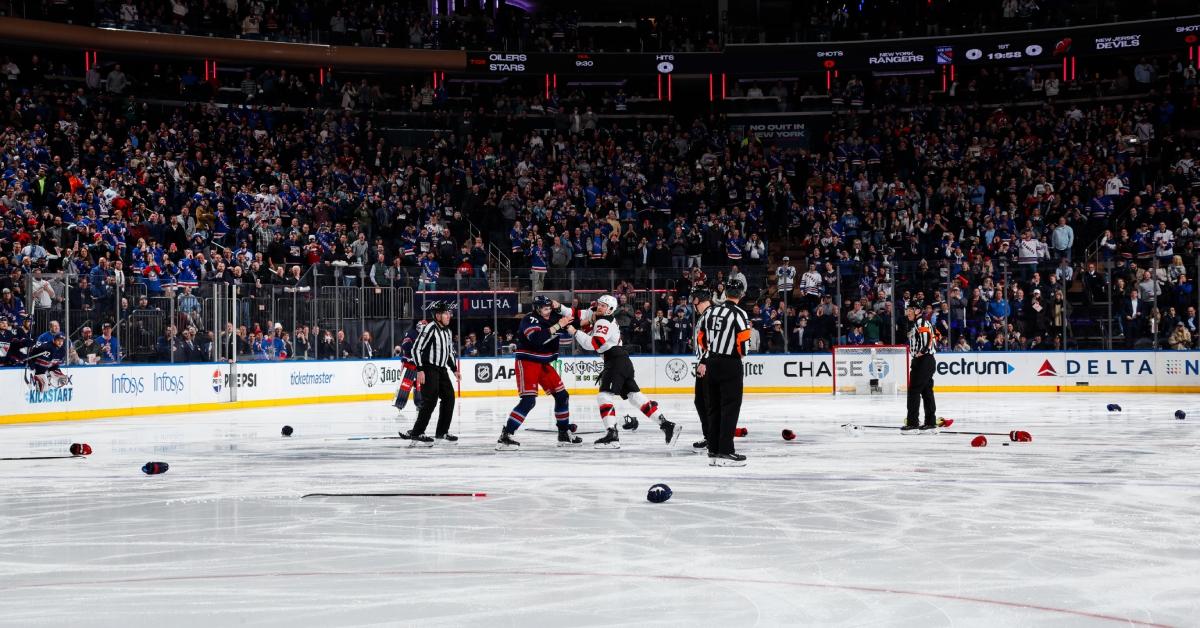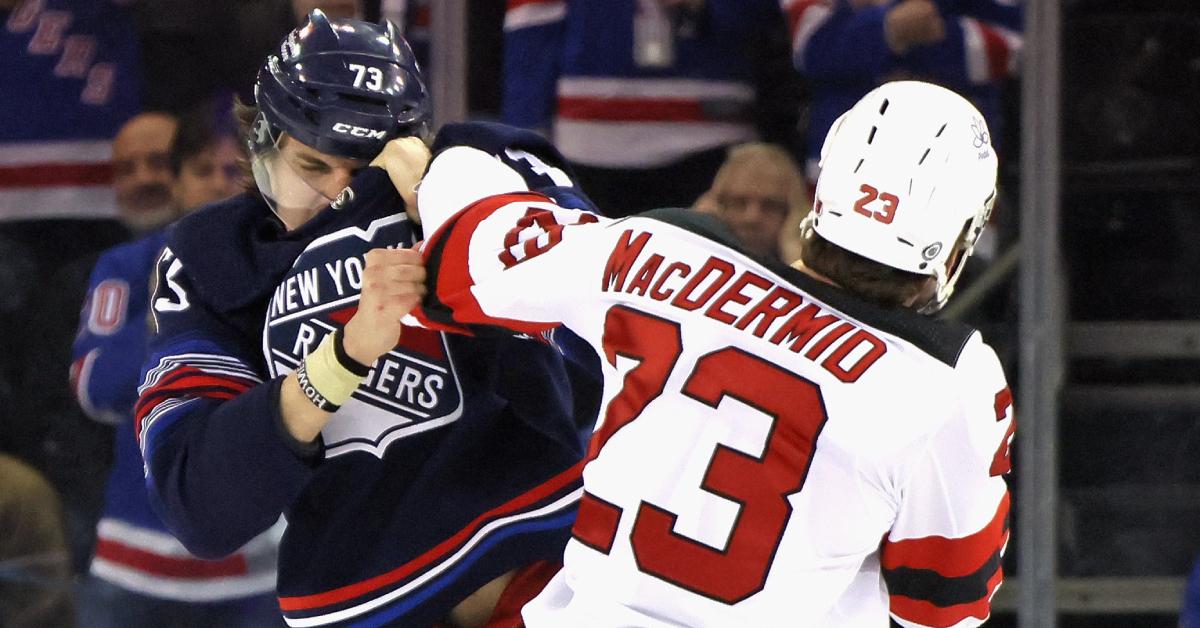Why Does the National Hockey League Allow Fighting When It's Not the Goal of the Game?
"It was great to see the team responding that way and having each other's backs out there. l have a lot of respect for him."
Published April 4 2024, 4:59 p.m. ET

Whether you’re an NHL fan or just remember loving Blades of Steel on NES or NHL ‘96 on Sega, you know fighting is part of the game. To some casual sports fans, it's the best part of the game and the only highlights they're shown on ESPN.
With a brawl at a recent New Jersey Devils vs. New York Rangers game that began as soon as the puck dropped, you may be wondering why a sports league that isn’t exactly about fighting allows fighting at all. So why do hockey players duke it out on the ice?

Fighting is part of the NHL rulebook.
The section on fighting in the NHL rulebook, “Rule 56 - Fisticuffs,” has some good prose. It begins, “An instigator of an altercation shall be a player who by his actions or demeanor demonstrates any/some of the following criteria: distance traveled; gloves off first; first punch thrown; menacing attitude or posture; verbal instigation or threats; conduct in retaliation to a prior game (or season) incident; obvious retribution for a previous incident in the game or season."
When it comes to why the league allows fisticuffs, it’s the last bit that matters. In The Code : The Unwritten Rules of Fighting and Retaliation in the NHL, author Ross Bernstein posits that fights exist to clear the air over previous dirty or bad plays. Allowing players to duke it out in a somewhat formal setting prevents future in-game, fast-paced targeting that could lead to even worse injuries.
Fighting is allowed in the NHL because the league believes it prevents greater violence
Because the players in the fight are instantly penalized, there’s incentive for the fights to be kept to a minimum. It’s another reason you’re less likely to see fists thrown when it’s two teams playing for a better playoff spot or in a tightly contested game.
Though it technically hurts both teams when players fight, some think it’s good for boosting both team morale and respect for the opposing player. After the Apr. 3, 2024 fight between the Rangers and Devils, the Devils’ Kurtis MacDermid said, "It was great to see the team responding that way and having each other's backs out there. l have a lot of respect for him [New York Rangers’ Matt Rempe, the opposing player MacDermid fought]. He's a young kid trying to do his thing. I understand that.”

According to a 2022 study, fighting in the NHL does not prevent greater violence.
While you can find multiple positive anecdotes about fighting in hockey from the dawn of the game until today, there’s more and more scientific proof that fighting does not prevent greater violence.
Michael Betz, an associate professor of human sciences at The Ohio State University and former college and minor league hockey player, authored the study “Tooth for a tooth: Does fighting serve as a deterrent to greater violence in the modern NHL.”
The research article’s conclusion reads, “On the surface, increasing the opportunities for traumatic brain injury by sanctioning bare-knuckle fighting as a punishment for other forms of potentially violent or dirty play seems contradictory, especially given recent advancements in our understanding about the short- and long-term impacts of traumatic brain injuries.”
In an interview with Ohio State News published June 22, 2022, the researcher said, “If anything, fighting seemed to encourage more violence against teams that were involved in brawls.”